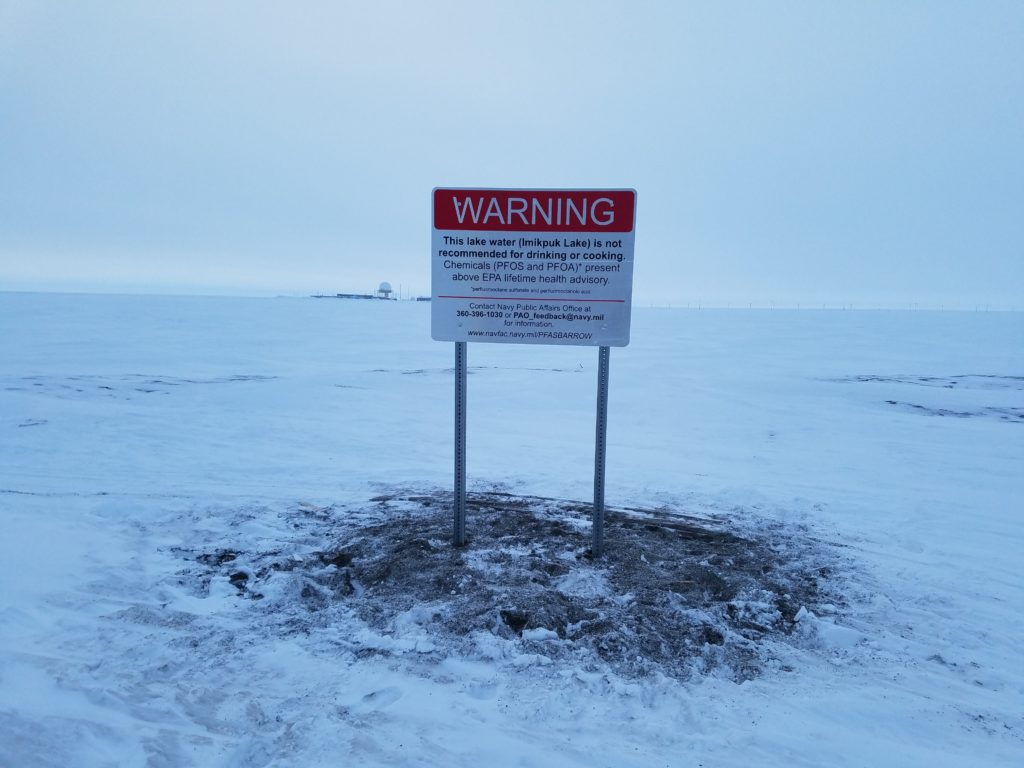
Legislation now under consideration by the Alaska Senate would strengthen testing requirements for water sources statewide, to determine if levels of toxic chemicals make the water unsafe for human consumption.
Senate Bill 121, sponsored by Senators Jesse Kiehl, D-Juneau, Elvi Gray-Jackson, D-Anchorage, and Scott Kawasaki, D-Fairbanks, would require parties responsible for the presence of per- and polyfluoroalkyl substances to provide routine testing of all sources of drinking water and voluntary blood tests of individuals who routinely drink this water to determine individual responses to exposure to PFAS.
The legislation comes in the wake of a detailed 2019 report from Alaska Community Action on Toxics on the impact of the widespread impact of toxic chemicals in Alaska waters and concerns voiced last year by legislators who urged Gov. Mike Dunleavy to hold responsible manufacturers who knowingly sold products the spread PFAS contamination in Alaska.
Protecting human health and the environment only in areas not under military jurisdiction is likely to cost the state hundreds of millions of dollars and the state should seek relief to cover those costs, the legislators told Dunleavy.
The ACAT report details a number of areas where water has been tested for PFAS, including wells near the Valdez, Cordova and Kenai airports. The report said no PFAS were detected at or above detection limits in Cordova groundwater.
The Alaska Attorney General’s office this past week filed a lawsuit against dozens of companies, including 3M Company and E.I. DuPont de Nemours, for their roles in the release of two specific PFAS chemicals. The state alleges that these companies for decades knowingly designed, formulated, manufactured, marketed distributed or sold these products, including one known as aqueous film-forming foam, or AFFF, which is commonly used to extinguish fires involving petroleum or other flammable liquids, including jet fuel.
PFAS, first developed in the 1940s, are used in numerous consumer products, from non-stick cookware to waterproof clothing, stain-resistant furniture and carpeting and personal care products. PFAS chemicals are also used in AFFF at airports, military installations, oil and gas facilities, fire training centers and other locations, notes Alaska Community Action on Toxics, which produced a detailed PFAS report in 2019.
The report urged the state to act swiftly to protect the drinking water and health of residents rather than defer such actions to the federal government. The report quotes Sally Schlichting, former manager of the Department of Environmental Conservation’s contaminated sites program as saying DEC must use a science-based approach to set standards, investigate all potential contaminated areas and receptors, require complete reporting of all analytes and do all they can to protect Alaskans and the environment from additional exposures to PFAS. To do otherwise is negligence, Schlichting said.
The ACAT report notes that an increasing number of states, prompted by the latest scientific understanding of adverse health effects of PFAS exposure, have established health protective regulations more stringent than EPA’s health advisory levels for PFAS in drinking water sources.
Meanwhile, the ACAT report said, the state of Alaska had rolled back protections, choosing to test for and regulate only two PFAS compounds.
As of April 2019, the report said, the state of Alaska was requesting and reporting results from contracted laboratories for only two of 18 different PFAS compounds in drinking water, the ACAT report said.
PFAS have contaminated public drinking water supplies serving millions of people around the world, said Pam Miller, executive director of ACAT, in a commentary written one year ago this month.
These synthetic chemicals don’t break down and are known as “forever chemicals,” she said. They are toxic at exceedingly low levels of exposure and are associated with adverse health effects including immune suppression, cancer and thyroid disruption, she said.
With PFAS continuing to contaminate water, fish, wildlife and people in Alaska, the state needs to take action to protect public health, she said.





